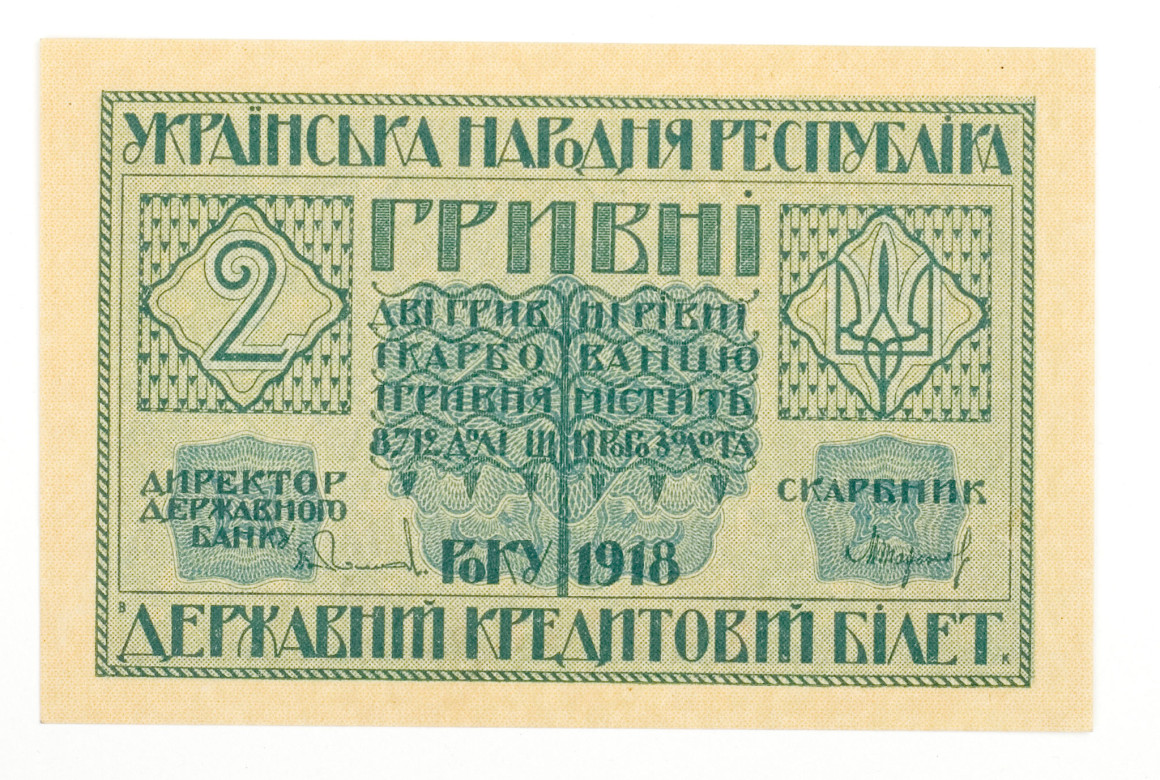
How much are your karbovantsiv worth?
By Susan Anderson, January 15 2015 —
Imagine creating your own currency by stamping existing bills with an anarchist image. Or being in such a rush that there are spelling mistakes and crooked cutting on your new notes. Then imagine holding on to this now-worthless money for 70 years even though it could land you in a Soviet gulag.
The new exhibit, Sovereignty, Money and Power: The Paper Currency of Revolutionary Ukraine 1917–1920, at the University of Calgary’s Nickle Galleries, displays these currencies depicting an independent Ukrainian state.
Michele Hardy is an associate curator at the Nickle Galleries and program coordinator for museum and heritage studies at the U of C. She says the bills represent a turbulent historical moment.
The old tsarist empire was crumbling during the First World War, and the Soviet Union came to control Ukraine after 1921. Three unstable governments printed the currency from 1917–1920 during the Ukrainian War of Independence.
“You have the visual expressions of that moment, that time, that effort,” says Bohdan Kordan, the exhibit’s curator. “Some of the [bills] are extraordinary in terms of the design.”
The designs speak to the creative talents of people who were at the heart of the Ukrainian art movement.
The Ukrainian National Republic used images of peasants with spades and a wheat sheaf. The Hedman state had images of Cossacks. Nestor Makhno’s anarchist movement in south-east Ukraine didn’t waste time with printing presses. They just stamped over existing currency with their image and new denominations.
“They were imagining what a currency should look like and how to be relevant for this country at this time, but with no reference point,” Kordan says. “No matter what the ideological stripe of the government, they were all committed to this notion of Ukrainian independence.”
Symbols often reappear because the regimes were rapidly changing and couldn’t afford to redesign the notes.
All three regimes used the trident — or tryzub — on their currency. It appeared on coins in the 11th and 12th centuries and spoke to an age when the Ukrainian people were independent. The 20th-century regimes used the ancient symbol to legitimize their rule.
“Look at these things as documents of a particular time and place. We’re talking about nationalism, memory, inflation rates, technology. The way these things were printed is very different than the way we print money today,” Hardy says.
The governments had challenges with printing because Kiev was under siege. The government would be on the run, carrying the printing plates and trying to print money in make-shift facilities. Or they would have the money printed in Berlin or Vienna.
After the Soviet Union collapsed in 1991, Ukraine again had to print its own currency. They turned to the Canadian Mint. After the collapse of the Soviet Union, the money from the revolution began to reappear at flea markets where collectors scooped it up. These bills could have been destroyed, but they represent independence for a people still struggling for sovereignty.
“It was a criminal offence to actually have these kinds of images in your possession,” Kordan says. “Despite the danger of hanging on to these things, people did so.”
The exhibit runs Jan. 15–April 4 at the Nickle Galleries with an opening reception on Jan. 22 from 5:00–8:00 p.m.
